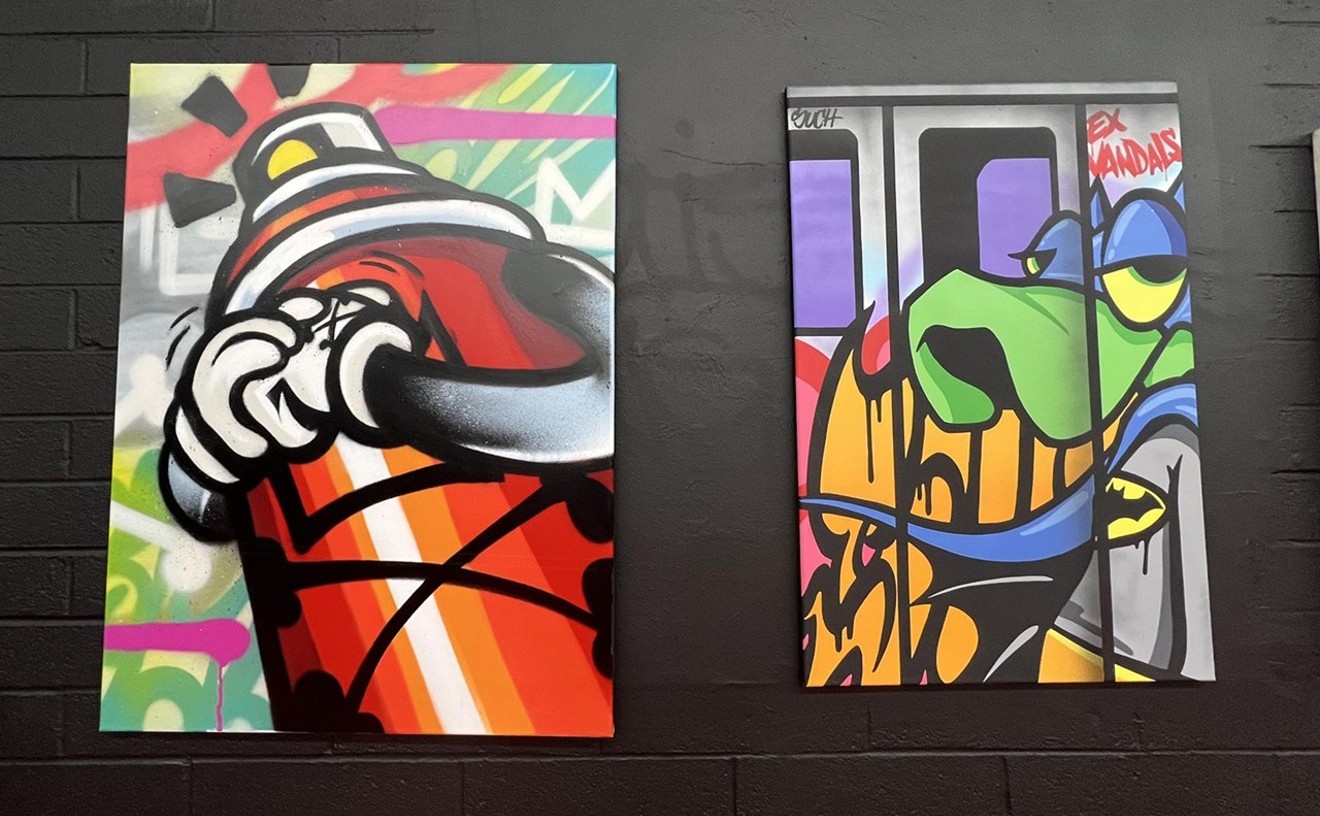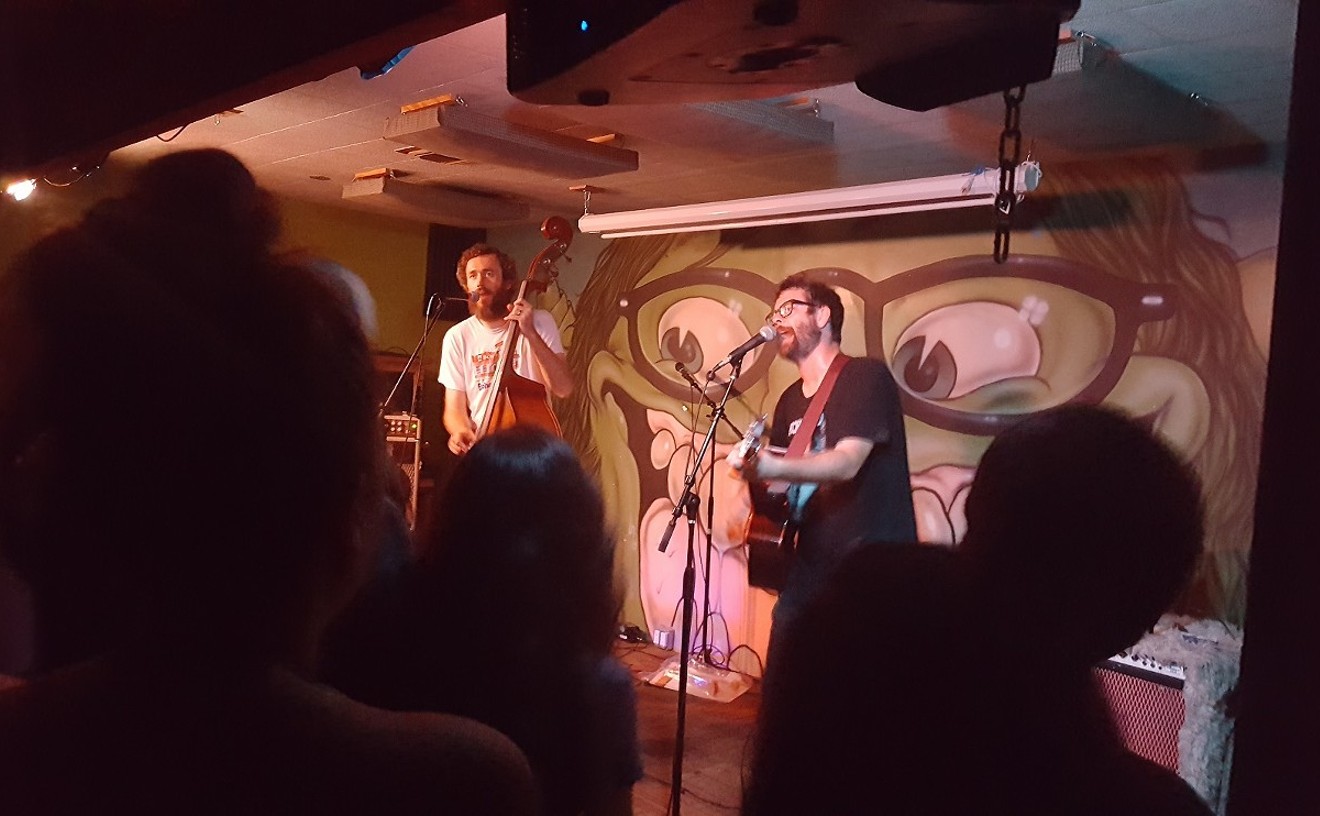"I'm afraid," Moore admits with a nervous chuckle, "that I'm actually going to have to sell something."
Moore hates the idea of parting with any of the vintage bits she fits together to make her color-drenched chenille wreaths and piñatas and gewgaw-strewn Styrofoam layer cakes.
"You can't get this stuff anymore!" Moore says pointing to the towering stacks of plastic bins wedged into the back of her shop at the corner of 15th Avenue and Grand. They're filled with rolls of bump chenille and doll parts and Styrofoam kokopellis. Moore laughs at herself and rolls her eyes.
"It's a kind of a sickness," she says. "I thought if I bought up big lots of old craft supplies, I wouldn't be afraid to use them because I could sell some and keep some. But I can't even part with pompons. I'll notice that I don't have so many of the green ones or the pink ones, and I start thinking about how I'll never be able to find these again, and . . ."
Moore's voice trails off. She's wearing a brightly beaded plastic necklace with a metal pendant shaped like a kitten's head. It's one of the items she plans to make and sell at the shop, along with her signature layer cakes and elf-face-studded wall hangings and sculptures made from old shopping carts. Other local artists, all chosen by Moore, will also offer their craft-centric art for sale. Bob Adams is planning a line of unusual rubber dolls. Tony Zahn, Moore's life partner for the past 20-odd years, will sell chunks of colored cement and totems made from vintage ceramic planters. Tom Cooper is preparing a number of brightly hued tikis made from toilet paper rolls.
"Maybe selling these things will help me get over this," Moore says of her attachment to crafty art. "It'll either get better or it'll get worse."
Although Moore has long been considered the grande dame of the downtown artist community, there are those who think of her these days as the grande dame of real estate on Grand Avenue, because she and Zahn have been buying up old buildings there since 1992 and leasing them to artists who use them as studios or convert them into galleries. Moore and Zahn's Stop and Look Gallery is among the best known; they're also responsible for restoring the historic Bragg's Pie Factory on Grand.
Saving old buildings wasn't in Moore's original plan. Born and raised in Dallas, she plunged headlong into Phoenix's then-languishing local arts scene shortly after moving here in 1986. Three years later, she founded Artlink Inc., a coalition of downtown artists, and launched Art Detour, the now-historic annual tour of artist studios and galleries. After serving as Artlink's president for four years, Moore shifted her energies to saving those historic Grand Avenue storefronts marked for demolition.
Moore had no illusions, when she came here, about holding aloft an entire arts community. "I planned to paint," she says. Soon, though, she was organizing First Fridays and preparing a printed arts news sheet called The Artlink Letter.
But the art world isn't always a lot of fun, Moore says. "There's sometimes a lot of angst wrapped up in it — a lot of dirty stuff about where you're going to show your art, and which gallery you bought it at. Things that don't have anything to do with art itself."
Neither, some art snobs might say, do the handmade crafts that inspire most of Moore's work. She shrugs at the notion that she's abandoned fine art for the kind of handicraft once associated with bored housewives. "I don't even like to use the term 'fine art,'" she confides. "What I like about what I'm doing now is it doesn't feel dirty in that way; it's more childlike and fun."
For some, what Moore is doing is just plain confusing. "Everyone wants me to sell their grandmother's craft projects," she laughs. "They say, 'Oh, my mom makes these really cute Kleenex boxes covered in yarn — you should sell them!' I don't want to be rude to people, but I want the store to reflect my sensibility."
It does. The interior of the space, originally a pharmacy and built, Moore believes, "sometime in the 1920s," looks very much like many of the other live-work gallery spaces on Grand: stained concrete floors; low, paneled ceilings; multi-colored pastel-painted walls. There's room toward the back for the lending library Moore has planned, so that customers can borrow the old crafting books she's long collected and teach themselves how to make pompon pets or Dip and Drape angels. "Here's one on how to make things from plastic spoons!" she says, unearthing an old pamphlet, then chuckling at herself again.
"I hope I'm not going to be running one of those places where people walk in and they go, 'How much is this?' and I go, 'That's not for sale!'" Moore says, then sighs. "I know it's just chenille. But once I use it up, it's gone."










